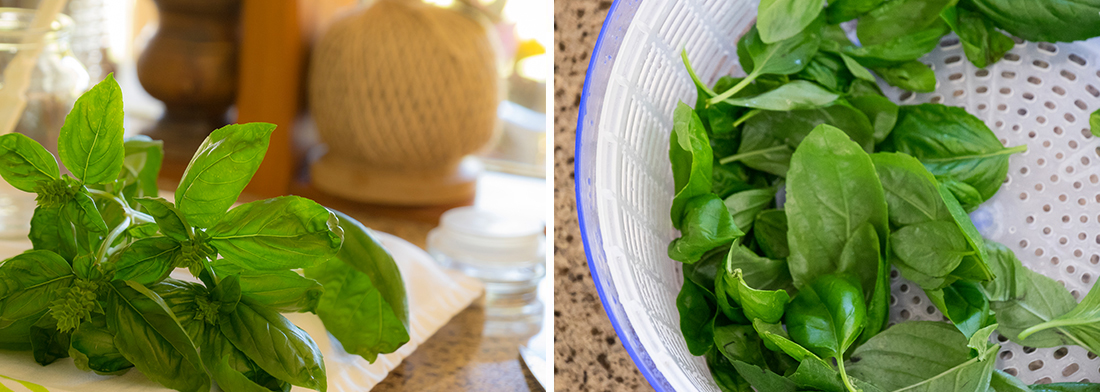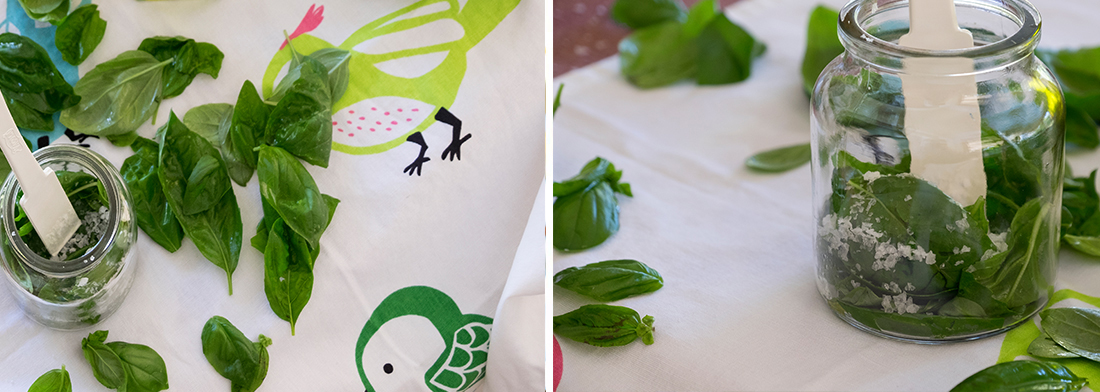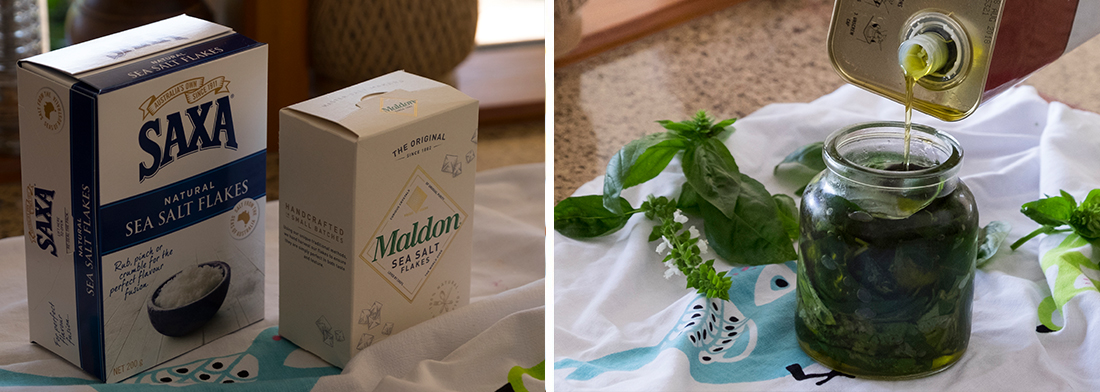Basil Preserved in Oil
- Drying, Salting & Potting

Basil and oil, timeless ingredients, are the basis of many traditional Mediterranean recipes, family favourites as well as our own inspired creations. Capture the intense aromatic flavour over summer and early autumn when it's abundant for use throughout the year. The salt, as well as enhancing the basil flavour, creates an unfavourable environment for bacteria to grow, while the oil seals the basil from air and bacteria.
Preserving in oil, also known as conservare sott’olio is a common and versatile Italian preserving method for many anti-pasta specialities. Preserved basil can be used wherever you would use salt, oil and basil in salads, salad dressing, pasta and gnocchi, soups and casserole. A little bit goes a long way and it makes a perfect culinary gift.
- Preparation Time:
- 30 minutes
- Quantity:
- 1 x 350 ml jar
PREPARATION
Sterilise and dry glass jar and lid.
Pick basil leaves just prior to preserving.

INGREDIENTS
- 125g
- Basil leaves, removed from stem
- 120 ml
- Olive oil, good quality
- 30g
- Salt flakes

METHOD
De-stem basil and wash lightly. Allow to dry on a clean dry tea towel or pat down very lightly, to prevent bruising the delicate leaves, with paper towel. Alternatively, if you have a salad spinner, place the washed basil in the colander section of the bowl and spin to remove the excess water.
Put a layer of basil leaves in a jar, then sprinkle with a generous sprinkling of salt. Gently pack down the leaves. Continue to fill the jar by alternating layers of basil and salt until you have used all the ingredients.
Fill the jar with olive oil, making sure that the basil is completely covered by the oil. Check after 2-3 days as the leaves will soften and absorb some of the oil. Top up if required to ensure the basil remains completely covered.
Seal tightly and store in a cool, dry and dark place for a month prior to using.
Once opened, store in the fridge.
NOTES
- This is a very simple method to preserve an abundant crop of summer basil.
- Basil leaves are very delicate. If washing and drying by hand, gently handle the leaves to prevent unnecessary bruising.
- Use the best olive oil that you can afford as this will influence the flavour of the preserved basil.
- Use the best quality salt flakes, not table salt, that you can afford. Table salt contains stabilisers and anti-caking agents and often iodide which can form a whitish haze and sediment. These additives and in particular iodine can affect the appearance and taste of pickles and preserves during the maturation and storage period. Some producers may label their products preserving or pickling salt. Best to check the label to make sure it doesn’t contain any additives before purchasing it. The ingestion of a cocktail of anti-caking chemicals such as calcium silicate, sodium silicoaluminate, tricalcium phosphate, magnesium carbonate, silicon dioxide and yellow prussate of soda, is unnecessary.
- My recommended natural sea salt flake brands are Olsson's Sea Salt Flakes (Australian), SAXA (Australian) and Maldon (UK)
- Using the preserved basil
- Do not salt the recipe until after you have added the basil and tasted it.
- Any remaining basil oil can by used in recipes where you are looking to obtain a bold basil flavour.
.
